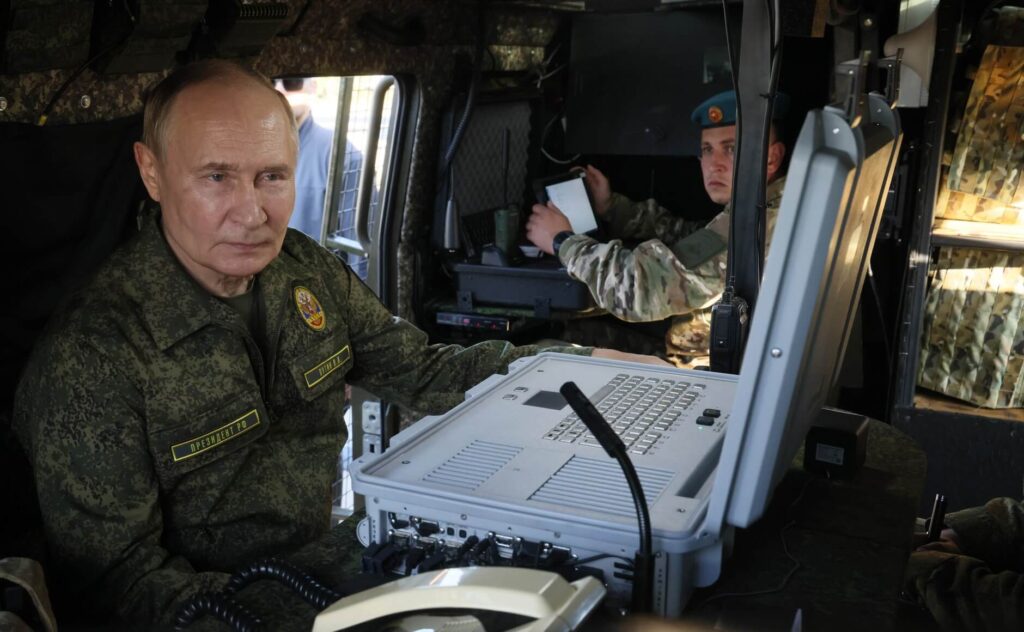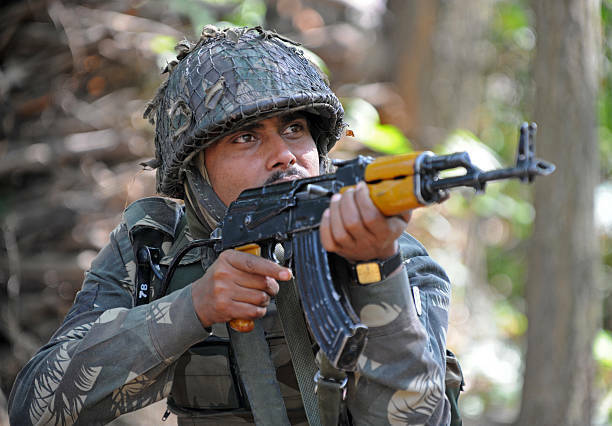
As part of a longstanding defence relationship with Russia, India participated in the Zapad-2025 military exercise at Nizhny Novgorod in Russia in mid-September 2025. In a press release, the Defence Ministry confirmed that contingent of 65 Indian Armed Forces personnel from the Army, Air Force, and Navy, took part in the exercise. Zapad is a large- scale series of drills that often comprise tens of thousands of troops, heavy equipment, air and naval components, and simulated operations across multiple fronts. India’s contingent was small, but its presence in a Russia- led war game amid Russia’s war in Ukraine, and U.S.-India tensions over trade and energy, has generated a considerable geopolitical discussion.
India-Russia Ties
India’s ties with Russia are long-standing especially in the field of defence procurement, joint development of military hardware (for example, the BrahMos missile project, licensed manufacture of Russian arms, etc.) and energy cooperation have anchored the relationship. Simultaneously, in recent years, India has been seeking to diversify its defence supply base, enhancing cooperation with Western powers including the U.S., France,
and also trying to deepen its indigenous defence industry under its “Atmanirbhar Bharat” (self‐reliant India) push.
At the same time, the U.S. has expressed “some concerns” about India’s military and technological engagements with Russia; there are delays, mistrust, and divergent expectations in the India-U.S. defence relationship.
Why India Participates: Motivations & Strategic Logic

Understanding why India would take part in Zapad-2025 (or any Russian-led military exercise) despite the risks and political costs is crucial. Key motivations include: –
Strategic autonomy. India’s foreign policy tradition values independence in decision-making. Participation in drills with Russia is an expression of that autonomy: it sends a message that New Delhi is not locked into any alliance siding purely with the U.S. or the West, even as it deepens cooperation with them. India seeks flexibility to engage multiple powers.
Defence ties & Materiel Legacy. A large share of India’s military hardware remains of Russian (or ex-Soviet) origin. Maintenance, overhaul, spare parts, upgrades, and training are all tied to Russia. Maintaining good relations (both formal and informal) is helpful for sustaining those legacy systems. Exercises help maintain working familiarity and trust.
Energy and Economic Benefits. Russia has been a supplier of discounted oil and fuel post-Ukraine invasion, and India has taken advantage of that. Continuing a cooperative relationship helps secure favourable energy links, which has direct domestic economic benefits for India. Also, trade ties, investments, cooperation in non-military strategic areas are part of the package.
Geostrategic Positioning vis-à-vis China and Regional Threats. India faces multiple security challenges: China’s rise, border tensions, regional instability (Pakistan, Afghanistan, maritime threats). Having multiple partners helps hedge risk; cooperating with Russia gives New Delhi more options in terms of equipment, training, and diplomatic leverage. In certain cases, engaging Russia also acts as balance against Chinese influence, especially given Moscow’s complex relationship with Beijing.
Domestic Political Signalling. Participation in Russian drills is seen domestically as assertion of sovereignty. Politically, it can help demonstrate that India pursues its interests on its own terms, not merely as a junior partner. There is prestige in maintaining robust military ties with a major power like Russia.
Implications & risks for India

While there are clear benefits, there are also significant risks and trade- offs India must manage.
Reputational and diplomatic costs with the U.S. and Western allies
Given the current geopolitical context—Russia’s war in Ukraine, strong U.S. financial and diplomatic pressure—India’s visible military cooperation (even just exercises) with Russia can cause friction. It can feed into narratives in Washington and other capitals that India is less reliable or not sufficiently aligned on issues like support for Ukraine, sanctions enforcement, etc.
Sanctions & secondary effects. Although India has tried to insulate itself, participating in Russian military exercises might expose it indirectly to secondary sanctions or the risk that U.S./Western restrictions become
more stringent. For example, U.S. tariffs have already increased over trade concerns, including those tied to India’s oil purchases from Russia.
Technological & procurement constraints. If Washington perceives India’s ties with Russia as too close, especially in sensitive technology or dual-use systems, it could restrict India’s access to cutting-edge U.S. or allied defence technology under export control regimes (like ITAR, AECA, etc.). Some Indian defence deals with the U.S. are already delayed or under negotiation because of these issues.
Strategic ambiguity vs. alliance expectations. While strategic autonomy provides flexibility, it also introduces ambiguity for partners. The U.S. wants consistent alignment or support in certain global fora (e.g. UN, sanctions regimes, joint military exercises aimed at countering China). India’s continuing ties with Russia may limit the depth of its integration into U.S. defence-led architectures, including intelligence sharing, interoperability, logistics support.
Domestic cost of over-reliance. Over time, continued dependency (even if partially mitigated) on Russian supply lines for spare parts, maintenance, etc., may become problematic if Russia’s industrial base is degraded (as many analysts suggest due to war, sanctions), or if Russia becomes less able to deliver on contracts or cooperation. Thus, India must balance current gains against potentially growing vulnerability.
U.S. Reaction and Policy Challenges
The U.S. faces its own set of questions and trade-offs in how to deal with India’s simultaneous engagement with both Moscow and Washington.
Geostrategic Alignment and Credibility To counterbalance China and to maintain influence in the Indo-Pacific, the U.S. wants strong, reliable partners. If India participates in Russian drills, it may reduce Washington’s confidence in India’s alignment in shared security goals. This can affect planning and strategy: how much to share, where to invest, and what level of trust to place in India.
Sanctions Leakage & Undermining of Policy toward Russia
U.S. policy toward Russia has included sanctions, economic pressure, and efforts to isolate Moscow. If India continues to engage militarily or
economically with Russia, it can undermine those efforts, especially if India becomes a conduit for technology, trade, or energy.
Technology transfer & security of sensitive systems
U.S. laws and norms limit what can be transferred, especially where there are concerns about espionage, reverse engineering, or dual-use risk. India’s engagement with Russia complicates decisions in Washington about what defence exports to approve or restrict, and whether to allow co-development. Some U.S. officials have expressed explicit concerns.
Domestic political pressure. Congress and domestic interest groups may see India’s Russian ties as problematic. For example, concerns about human rights, Ukraine, Russian aggression, etc., or a desire to punish or reward behaviour via trade/tariff policy will factor in. U.S. administrations may find it politically costly to ignore India’s participation in Russian exercises without response, especially under more hawkish or isolationist domestic political climates.
U.S. Policy Balancing Act
The U.S. must decide how to respond across a spectrum ranging from appeasement to confrontation.
Incentivizing Alignment. The U.S. can offer more generous or faster defence technology transfers, co-development opportunities, greater joint exercises, infrastructure and logistics access, trade incentives. The idea would be to make cooperation with Washington more attractive to reduce India’s need to maintain strong military ties with Russia.
Selective Pressure. Identifying sensitive areas where India’s cooperation with Russia is particularly troubling (dual-use tech, critical systems) and drawing red lines. Possibly threaten secondary sanctions or other penalties if India crosses certain thresholds. But U.S. has to balance; heavy-handed coercion may backfire, pushing India further toward Russia.
Diplomatic Engagement. Open dialogue over expectations, transparent communication about what U.S. sees as risks, more clarity about what India gives up (or addresses) if it deepens cooperation with Russia. Also, working multilateral or with allies to ensure any response is coherent.
Leveraging multilateral structures. Quad, AUKUS, and other Indo- Pacific alignments can be leveraged to bring India into more commonly shared security architectures, which provide both benefits (training, intelligence sharing, joint readiness) and shared expectations of conduct.
Conclusion
It is time for India to seriously work towards self-reliance and focus on improving its manufacturing eco-system. No amount of self-back thumping and rhetoric of being the fourth largest economy in the world will help. We are still the second largest importer of arms in the World and more than 80 percent of our oil and energy requirements are met through imports. Unless this scenario changes, we will continue to get embroiled in the clashes between super powers. If we have to be a part of this great revolution of Vikhsit Bharat, the system of governance would need a major overhaul.

